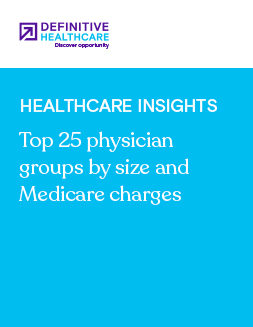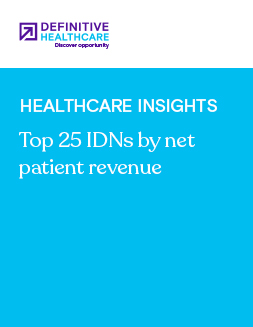Healthcare Insights
Top 15 gastroenterology CPT codes
While most people will weather a bout or acid reflux or food poisoning without seeing a doctor, it’s more likely than not that an individual will find themselves receiving medical care for a gastroenterology condition at some point in their lives. Digestive diseases are listed as the primary diagnosis for an estimated 66.4 million ambulatory care visits each year (including physicians’ offices, hospital emergency rooms, and outpatient facilities).
What is gastroenterology?
Gastroenterology is the study of the human digestive system and the diseases that affect its normal function. Gastroenterologists develop a thorough understanding of the entire gastrointestinal (GI) tract, including the esophagus, stomach, intestines, rectum, pancreas, gallbladder, and liver.
GI conditions include a wide range of symptoms from annoying but typically mild—like indigestion or acute diarrhea—to potentially life-threatening but hard to detect—like cancers of the pancreas or gallbladder.
Keep reading to see our list of the top 15 gastroenterology CPT codes with the highest procedure volumes below.
| Rank | HCPCS/CPT code | HCPCS/CPT description | % total procedures | % Total charges | Explore dataset |
|---|---|---|---|---|---|
| 1 | 91200 | Liver elastography | 30.40% | 7.70% | Explore |
| 2 | 91065 | Breath hydrogen/methane test | 17.90% | 7.50% | Explore |
| 3 | 91110 | GI tract imaging, capsule endoscopy | 11.90% | 30.50% | Explore |
| 4 | 91010 | Esophagus motility study | 10.60% | 15.00% | Explore |
| 5 | 91122 | Anorectal manometry | 7.70% | 8.90% | Explore |
| 6 | 91035 | Gastroesophageal reflux test w/ electrode | 6.10% | 10.80% | Explore |
| 7 | 91120 | Rectal sensation test | 4.00% | 5.00% | Explore |
| 8 | 91037 | Esophageal function test w/ electrode | 3.90% | 2.90% | Explore |
| 9 | 91038 | Esophageal function test, >1 hour | 1.90% | 2.80% | Explore |
| 10 | 91040 | Esophageal balloon distention test | 1.90% | 3.70% | Explore |
| 11 | 91034 | Gastroesophageal reflux test | 1.80% | 2.20% | Explore |
| 12 | 91299 | Gastroenterology procedure (other) | 1.10% | 1.20% | Explore |
| 13 | 91112 | GI wireless capsule measurement | 0.30% | 0.90% | Explore |
| 14 | 91133 | Electrogastrography w/ test | 0.10% | 0.00% | Explore |
| 15 | 91111 | GI tract imaging, esophageal endoscopy | 0.10% | 0.20% | Explore |
Fig 1. Data is from the Definitive Healthcare Atlas All-Payor Claims Dataset. Data is accurate as of November 2023.
What are the top CPT codes for gastroenterology?
The liver elastography procedure (CPT code 91200) tops the chart with 30.4% of total gastroenterology claims in 2022.
Representing only 7.7% of total gastroenterology charges last year, it’s far from the highest-earning procedure on the list—that title belongs to number 3, the gastrointestinal (GI) tract imaging with capsule endoscopy, with 30.5% of total charges.
Liver elastography identifies the presence of fibrosis, a condition that causes scar tissue to build up in the liver and can lead to cirrhosis, cancer, or organ failure. Liver fibrosis is usually caused by long-term, excessive consumption of alcohol, or by metabolic abnormalities associated with obesity, diabetes and poor diet.
While Americans are drinking less these days, the prevalence of obesity continues to rise in the U.S., with 42.4% of adults qualifying as obese in 2018. The relationship between rising obesity and liver fibrosis rates (among many other GI conditions) suggests that gastroenterology will be an increasingly important field in American healthcare for years to come.
What other procedures do gastroenterologists frequently perform?
Second on our list, the breath hydrogen/methane test (CPT code 91065) represents 17.9% of all gastroenterology procedures in 2022.
This breath test measures the levels of hydrogen and/or methane in a person’s breath as they exhale. Abnormal gas levels in the breath can indicate the presence of certain digestive conditions, like sugar intolerances or bacterial overgrowths.
The GI tract imaging, capsule endoscopy procedure sits in the third position on our list with 11.9% of total procedure claims. This procedure involves swallowing a small, camera-filled capsule that takes pictures throughout the digestive tract. It can be used to identify a wide range of inflammatory bowel diseases, find the source of GI bleeding, diagnose cancer or screen for polyps.
Many GI conditions are quite common and relatively easy to manage, especially when identified early, but stigma around digestive issues may keep people from seeking help. For instance, between 10-15% of American adults are believed to have irritable bowel syndrome, but only 5-7% have been professionally diagnosed.
Learn more
Healthcare Insights capture a small slice of the massive amount of healthcare commercial intelligence available on the Definitive Healthcare platform. Want to see the full picture? Start a free trial today and get access to the latest healthcare commercial intelligence on hospitals, physicians, diagnoses, technologies, and more.



